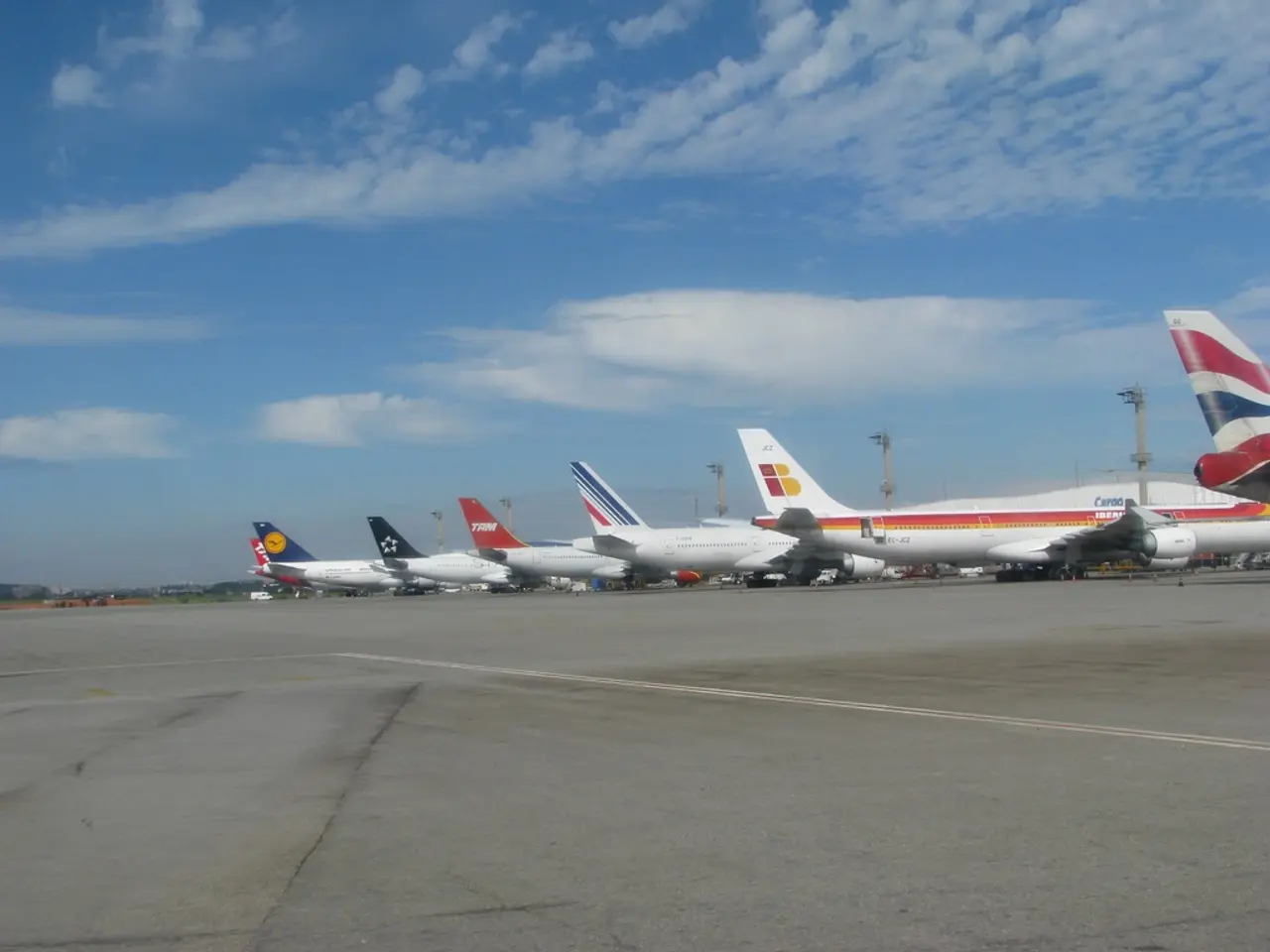Antarctica's Unusual Barrier Preventing Aircraft from Soaring Above
In the vast expanse of international air travel, one region stands out as an exception to the norm: Antarctica. **Commercial flights avoid flying directly over Antarctica mainly due to a combination of environmental, safety, and logistical challenges.**
The key reasons for this can be traced back to several factors:
1. **Lack of Infrastructure:** Antarctica has no commercial airports or emergency landing facilities. Aviation laws require planes to stay within a certain range of a functioning airport to enable emergency landings if necessary, so flights cannot traverse the continent itself[1][4].
2. **Harsh and Unpredictable Weather:** The continent is known for extreme and erratic weather conditions, including ferocious katabatic winds that create some of the roughest air in the world. These turbulent winds make flying over Antarctica risky and challenging for pilots[1].
3. **Low Demand for Flights Over Antarctica:** The vast majority of global air traffic occurs in the Northern Hemisphere, where over 90% of flight miles take place. There is limited commercial necessity to fly directly over Antarctica since routes between continents like Australia and South America typically follow paths skirting the Antarctic coast rather than crossing the continent[1].
4. **Environmental Vulnerability and Regulatory Considerations:** Antarctica’s fragile ecosystem is vulnerable to human impact such as pollution and invasive species brought by tourism and transport. Strict regulations under the Antarctic Treaty System impose constraints on human activity, including aviation, to protect the environment[2][5].
5. **Increased Cosmic Radiation:** Polar regions, including Antarctica, experience higher levels of cosmic radiation, which poses additional concerns for commercial flights and crew safety at high altitudes over these areas[1].
While these challenges may seem insurmountable, some exceptions do exist. Chartered scenic flights from Australia or New Zealand offer passengers aerial views of Antarctica but do not land there. These flights are expensive and carefully planned to avoid risks[3]. Research and government flights operate in and around Antarctica for scientific and logistic purposes but are highly restricted and limited to authorized personnel[3].
In summary, the lack of airports, extreme and hazardous weather, stringent safety regulations, low commercial demand, and environmental protections collectively explain why commercial airliners avoid flying directly over Antarctica. The Antarctic environment creates significant operational challenges that differ from most other international flight corridors[1][3][4].
Despite the absence of commercial flights, it's important to note that the majority of the human population lives in the northern hemisphere, and the majority of flight miles are covered north of the equator[6]. The environment of Antarctica, being the world's largest desert, is notoriously windy and poses challenges for air travel that are unique compared to other regions.
[1] https://www.faa.gov/airports/airport_safety/runway_safety/media/Antarctica_FAA_FY2016.pdf [2] https://www.ats.aq/en/about-ats/ [3] https://www.britannica.com/topic/Antarctica/Air-transport [4] https://www.sciencedirect.com/science/article/pii/S2214629619301750 [5] https://antarcticanz.govt.nz/about-us/antarctic-treaty-system/ [6] https://www.statista.com/statistics/266713/global-air-traffic-by-continent/ [6] https://www.worldometers.info/world-population/world-population-by-continent/
- Despite the allure of observing Antarctica from the air, most people stay connected to this environmental science hotspot primarily through lifestyle choices that involve travel by sea rather than through commercial flights rooted in the unforgiving weather and logistical challenges it presents.
- The mixed landscape of science, lifestyle, and travel thus finds an exception when it comes to visiting Antarctica, with weather being a key factor that has pushed the boundaries of our understanding in the realm of meteorology and environmental science, making it a unique and challenging weather frontier.




